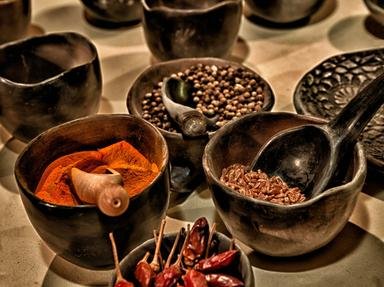Quiz Answer Key and Fun Facts
1. A fragrant pod used to enhance the flavour of curries, ice cream and lassi.
2. An unrefined sweetening agent also known as 'gurh' across southern Asia.
3. Chewed for their medicinal properties, these spicy seeds are hot enough to numb the tongue.
4. A fiery, pale yellow coloured rhizome often used as a remedy for an upset stomach.
5. This spicy powder is extracted from the skins of the mango.
6. A sweet and sour flavouring obtained from trees of the genus Fabaceae.
7. Attractively shaped spice pods also used widely in the cosmetics industry.
8. This condiment is used in Indian cuisine to impart an egg-like flavour to vegan foods.
9. This is an attractive multi-coloured lichen used for culinary purposes.
10. A souring spice obtained by sun-drying the skins of the mangosteen.
Source: Author
SisterSeagull
This quiz was reviewed by FunTrivia editor
WesleyCrusher before going online.
Any errors found in FunTrivia content are routinely corrected through our feedback system.
